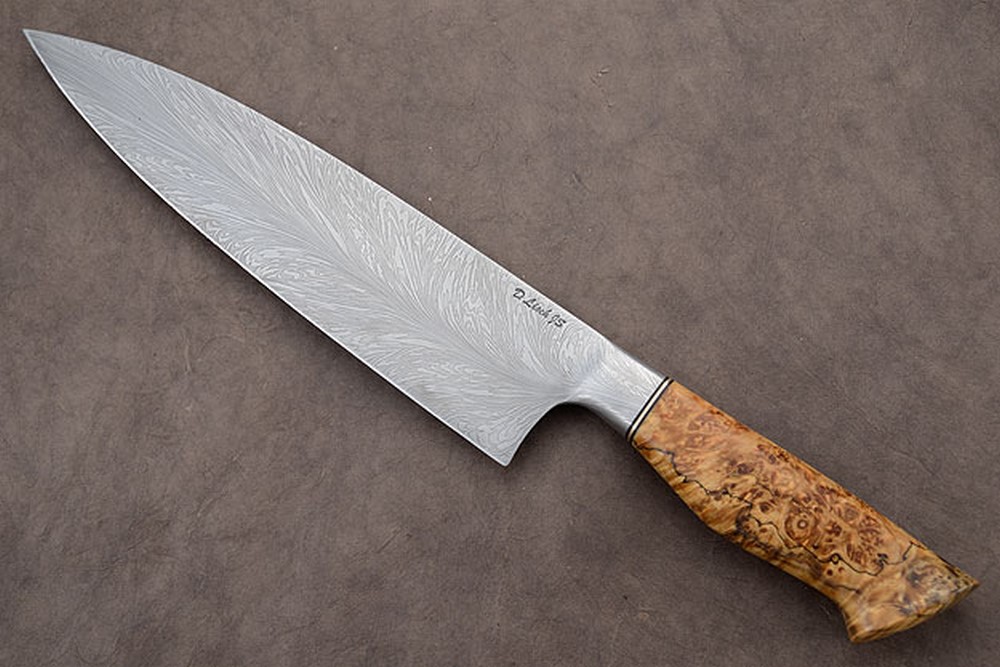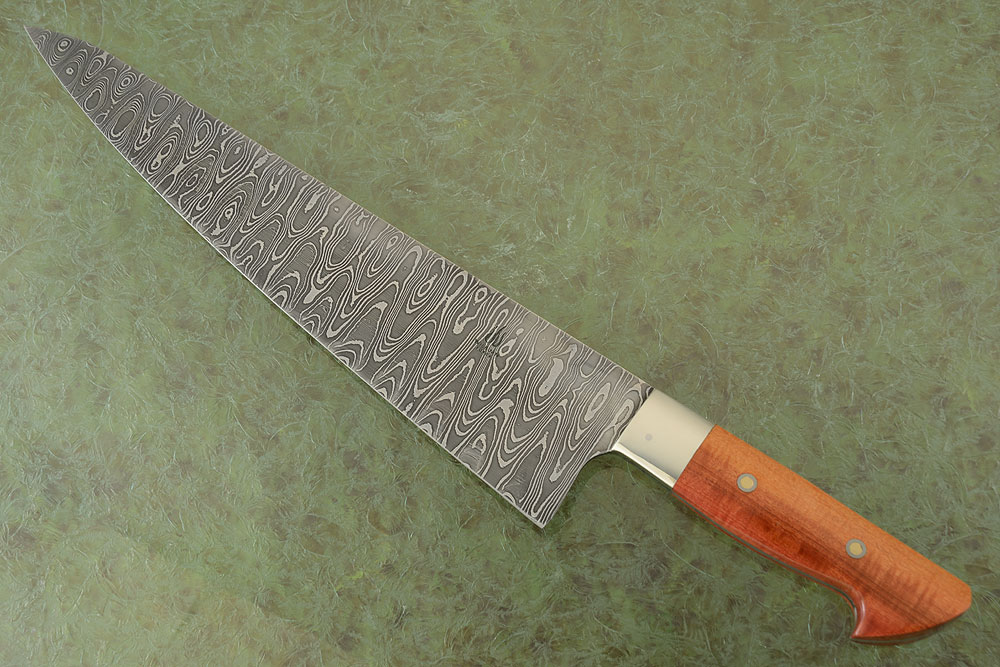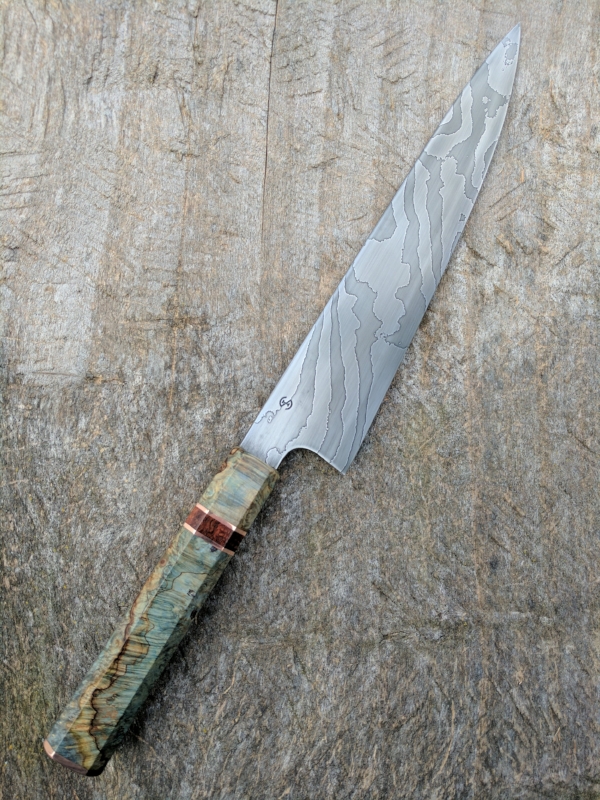bahamaroot
Idiot Savant
What is the difference between Damascus vs Suminagashi?

Your usual helpful self....Japanese vs english language
Much better.IIRC suminigashi is a particular pattern for the pattern (they have names for waves, clouds, etc)
A japanese speaker would probably clarify the linguistic and social context of the word.
For us, it generally specifies "non-kasumi" and "non-monosteel" (honnyaki) when makers
have different options for cladding/contrsuction or levels of finish in a given line of knifes.






Enter your email address to join: